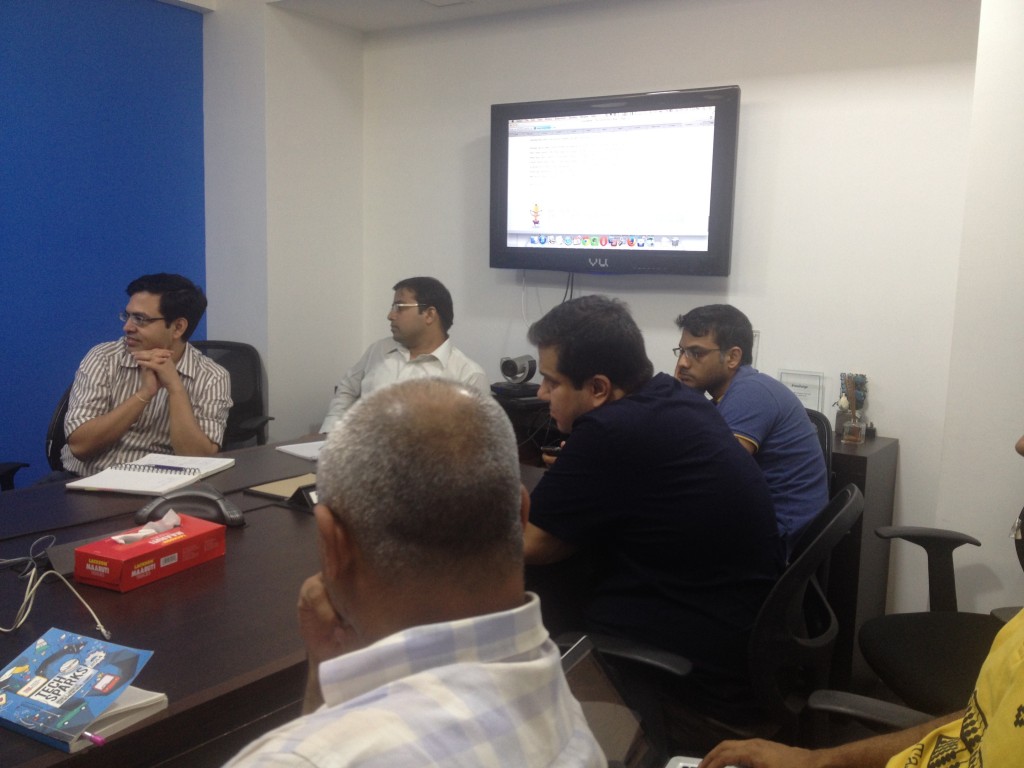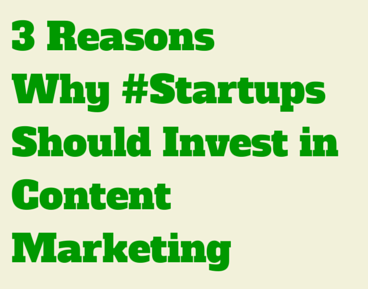Congratulations, you have just started up. It has taken so long to get here – you’ve worked hard, saved up, staved away every comfort, and your product is out, garnering rave reviews. Now you turn to the other important stuff you need to do – get your product in front of your market. It’s time for the marketing and selling push in a startup.
And this is when you know you have to set up a content marketing effort. You know it costs less, brings in way more, and can contribute to branding in an unimaginable way.
But how and where do you start?
I’ll try to answer that.
When I started out, content marketing was just about catching fire as a viable marketing channel. The field was nascent (and in many ways, still is) and everything we have learned about it, we have learned by doing. I’ve tried to make a small guide out of what we’ve learned.
The two towers of content marketing
There are two separate efforts involved in content marketing. I call them the two towers. One of them is of course creating the content that will educate the market and convince people to buy your product. This is your first challenge. The other is getting it in front of them, what we call ‘distribution’. Even if you have written and designed amazing content, it’ll only be valuable if your audience reads it. Your second challenge lies in grabbing the eyeballs that will translate into greenbacks.
Wading in, then.
The first tower – content
1. Blog
2. Whitepapers
3. Case Studies
4. E-Books
5. In-product help texts
6. Infographics
7. Videos
8. Presentations
The list I have compiled above is just a snapshot of the things you can do. Platforms and formats abound for people who want to get more creative and tell stories in a new way. But to get started, the list above will do very well. For any B2B product, educating the customer about what your product can do and what your product can do better than others is the aim, and all the content generated should be tailored around specific takeaways for the audience.
I still believe in the blog as the key channel for any startup. A few months after my CEO Girish Mathrubootham had started up Freshdesk, he wrote a post on the Freshdesk Blog about how a Hacker News comment had been his inspiration to quit his job and start a company. The post went viral, people across the world read it, shared it, and were inspired by it. It brought us recognition on a scale we hadn’t even imagined. And this was when we didn’t even have a marketing plan in place. It is just not about the customers the blog brings as well; a good blog is a good branding statement. The first thing that most people look at when they reach your site is the blog. It just has to be amazing.
All of the rest come under the banner of educational informational content. Make it a point to tailor content to different stages of the sales cycle and deliver it when the customer has the most need for it. For example, when a customer is trialling your product, make sure he gets in-product help texts to help him navigate the newness of it. You can send him white-papers comparing your product with your competitors and tell him all the reasons he needs to choose you. You can send him videos showing him little tips and tricks in the product that makes his work easier. You get the point.
Now on to the trickier part of the equation.
The second tower – distribution
1. SEO
2. Social
3. The Community
Anyone getting into the Content Marketing equation should understand this first – one thing you do will feed into the other.
Now that you have created the stuff you think your audience will like, you need to get it to them.
Basic SEO is imperative. This is the most targeted form of inbound marketing there is. If you do not deliver content to the people who are actually looking for it, you might as well pack up and leave. And make no mistake about it, this is grunt work. You have to get down, get your hands dirty, pick through tags, metatags, best practices, measure impact, rinse, repeat. Use a tool like Scribe. Think keywords, SEO pages, landing pages and more.
This should get you started.
Now to the social web. Your social presence is your admit card to the masses. You now have access to people all over the world who are looking for and consuming information just like what you are creating and some of them are ready to open their wallets for the product you have made if it is going to give them any value. But again, it is not something to be totally enthralled by. The worst thing you can do is consciously try to ‘go’ viral. Get on the social platforms that make sense for your business, and build a consistent and interesting presence. Share stuff that your followers are interested in, and not just what you create. Build a social community. This will give you credibility as well as an audience that wants to listen to what to have to say.
For a product, it is sometimes better to build communities by themselves. One way to do this is like how Dropbox does it, forging a community by giving users incentives to evangelize the product in exchange for more space. This is a great way to growth-hack, if your product is something as inherently social as Dropbox. But for other ‘normal’ products, several support tools let you build your own community, including Freshdesk. When you let customers talk to each other, put forth new ideas for your product, vote on new features, share tips and tricks and so on, what you have is an engaged community that co-owns your product, has a stake in it becoming better and even more amazing, and will go out of their way to help you make it so. This community will be the greatest pack of evangelists you’ll ever have, and your content will be shared and trumpeted by them, thereby reaching audiences far beyond what you’ll be able to reach yourself.
I was talking to my boss Vikram last night, and standing on the balcony of our 7th floor office, he told me about how “There is no shortcut to slogging. You just have to. Only then will anything worth learning be learnt.”
An so it is with Content Marketing. To get better at it, you need to put in your hours, grind it out, make mistakes, learn.
So that is what I urge you to do. Start.



 Content Marketing
Content Marketing Conclusion
Conclusion While this is definitely good news for start-ups, the reality is that they often don’t have the time, resources or know-how to turn their organization into a lean, mean content marketing machine. Just like that, developing content often gets relegated to the bottom of the team’s to-do list, or simply isn’t a priority at all. However, the cost of missing out on the content marketing game is high: start-ups are essentially forgoing an opportunity to attract customers. In fact,
While this is definitely good news for start-ups, the reality is that they often don’t have the time, resources or know-how to turn their organization into a lean, mean content marketing machine. Just like that, developing content often gets relegated to the bottom of the team’s to-do list, or simply isn’t a priority at all. However, the cost of missing out on the content marketing game is high: start-ups are essentially forgoing an opportunity to attract customers. In fact, 

